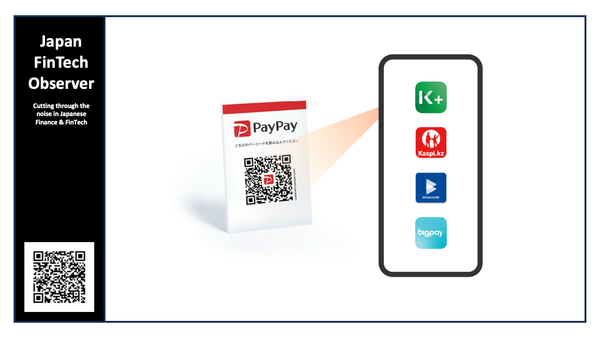The Bank of Japan's 21st round of "Bond Market Group" meetings

The Bank of Japan has published a summary of the discussions held between the Bank of Japan (BOJ) and representatives from commercial banks, securities firms, and buy-side institutions (collectively referred to as "market participants") regarding the Japanese government bond (JGB) market. The meetings, held in early December 2024, covered topics such as recent market trends, JGB market functioning and liquidity, BOJ operations, and inflation-indexed bonds.
Recent Trends in the Japanese Bond Market
- Impact of Reduced JGB Purchases: The BOJ's July decision to reduce JGB purchase amounts was anticipated by the market and didn't cause significant disruptions. However, long-term interest rates saw a slight increase, mirroring a similar trend in U.S. long-term rates, influenced by robust U.S. economic data and the presidential election outcome.
- Market Volatility and Risk Sentiment: August witnessed increased market volatility and a decline in interest rates due to concerns about a potential U.S. economic slowdown. This risk-off sentiment led to a sharp drop in Japanese long-term interest rates as expectations of a BOJ rate hike receded. Subsequently, these rates rebounded as rate hike expectations resurfaced, aligning with rising U.S. long-term rates.
- Super-Long-Term JGB Yields: Yields on super-long-term JGBs rose significantly compared to other maturities due to concerns about supply-demand imbalances. This was partly attributed to life insurers adopting a wait-and-see approach after a period of regulatory-driven demand.
- Impact of Reduced BOJ Purchases on Supply-Demand: Despite the gradual reduction in BOJ's JGB purchases since August, market participants haven't observed substantial shifts in JGB supply-demand dynamics stemming from these operations.
Functioning and Liquidity of the Japanese Bond Market
- Gradual Normalization: While acknowledging the BOJ's gradual reduction in JGB purchases, market participants recognize that the market remains in a normalization phase, anticipating a moderate improvement in market liquidity.
- Correlation with Overseas Interest Rates: The correlation between domestic and overseas interest rates is gradually strengthening due to the reduced impact of BOJ's purchases. This suggests a return to more market-driven dynamics.
- Improved Trading Activity: Trading activity, especially for on-the-run JGB issues, has shown improvement, while the tightness in supply-demand conditions caused by BOJ purchases has begun to ease.
- Enhanced Market Functioning and Liquidity: Market functioning and liquidity have shown signs of improvement, as indicated by decreased use of the Securities Lending Facility (SLF). The reduction in BOJ's JGB purchases and increased predictability of future purchase amounts are believed to have contributed to this positive development.
- Cheapest-to-Deliver (CTD) Concerns: Market participants voiced concerns about JGB issues held in significant amounts by the BOJ becoming the cheapest-to-deliver in the futures market, potentially leading to short squeezes. While acknowledging these concerns, the increased issuance in liquidity enhancement auctions and reduced repurchase amounts of CTD issues under the SLF were noted as mitigating factors. Continued use of these measures and communication from the BOJ were seen as crucial to address these concerns effectively.
The Bank of Japan's Operations and Other Considerations
- Reduction in Purchases by Maturity Segment: Market participants generally supported the BOJ's approach of reducing purchases primarily in segments where its holdings are proportionally large. They suggested that the BOJ consider both the share of its holdings and the share of its purchases in the issuance amount when determining the reduction amount for each maturity segment. Emphasis was placed on continuing the reduction in purchases of bonds with maturities up to 10 years, given consistent demand from investors like banks.
- Predictability of Operations: Market participants stressed the importance of clear communication from the BOJ regarding future purchase reductions, especially in maturity segments not yet impacted by reductions (such as super-long-term JGBs), to avoid surprising the market.
Views on Purchases of Inflation-Indexed Bonds
- Rationale for Reduction: While acknowledging the high share of BOJ purchases in the issuance amount of inflation-indexed bonds, market participants recognized the rationale for a gradual reduction, aligning with the approach taken for fixed-rate bonds.
- Cautious Approach: Market participants emphasized the need for a cautious approach to reducing purchases of inflation-indexed bonds, considering the potential impact on market functioning due to low liquidity and a limited investor base.
Views on the Securities Lending Facility (SLF)
- Continued Importance: Market participants highlighted the importance of maintaining relaxed terms and conditions for the SLF for CTD issues to ensure JGB futures market liquidity. They emphasized the need for clear communication from the BOJ regarding any changes to these measures.
- Potential Enhancements: Suggestions were made for further enhancing market functioning by setting a relatively low minimum fee rate for the SLF for certain JGB issues where the BOJ holds a significant share. Additionally, combining reduced SLF repurchase fees with "operation switch" (simultaneous selling and buying of JGBs) was suggested as a means to increase the amount outstanding of specific JGB issues.
In summary, the discussions focused on the evolving JGB market landscape, emphasizing the importance of smooth market functioning, transparency in BOJ operations, and a balanced approach to reducing purchases across different maturity segments and asset classes. Market participants expressed confidence in the BOJ's overall strategy but stressed the need for clear communication and careful consideration of market conditions as the BOJ continues to normalize its monetary policy operations.
Please follow us to read more about Finance & FinTech in Japan, like hundreds of readers do every day. We invite you to also register for our short weekly digest, the “Japan FinTech Observer”, on LinkedIn, or directly here on the platform.
We also provide a daily short-form Japan FinTech Observer news podcast, available via its Podcast Page. Our global Finance & FinTech Podcast, “eXponential Finance” is available through its own LinkedIn newsletter, or via its Podcast Page.
Should you live in Tokyo, or just pass through, please also join our meetup. In any case, our YouTube channel and LinkedIn page are there for you as well.




